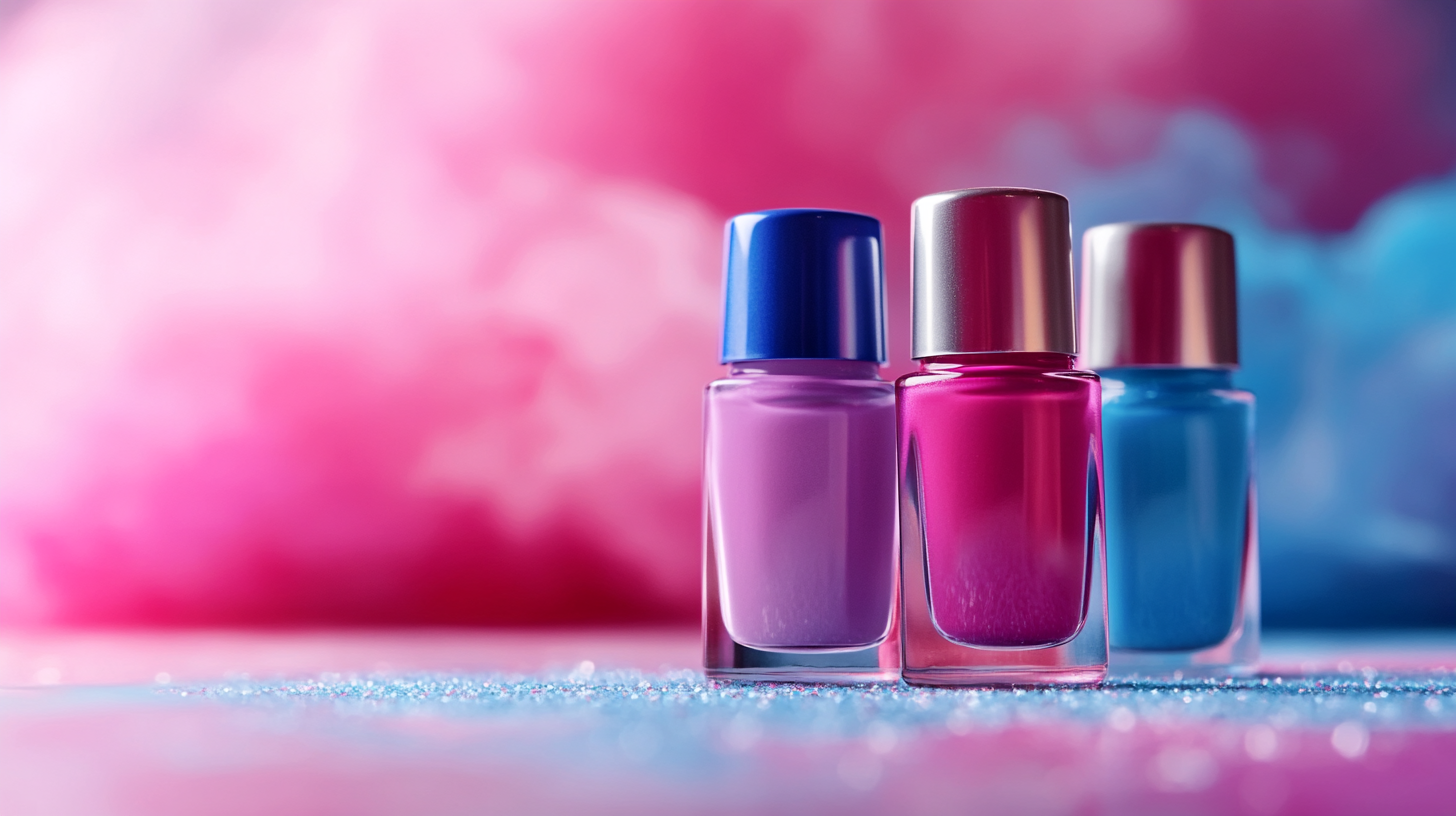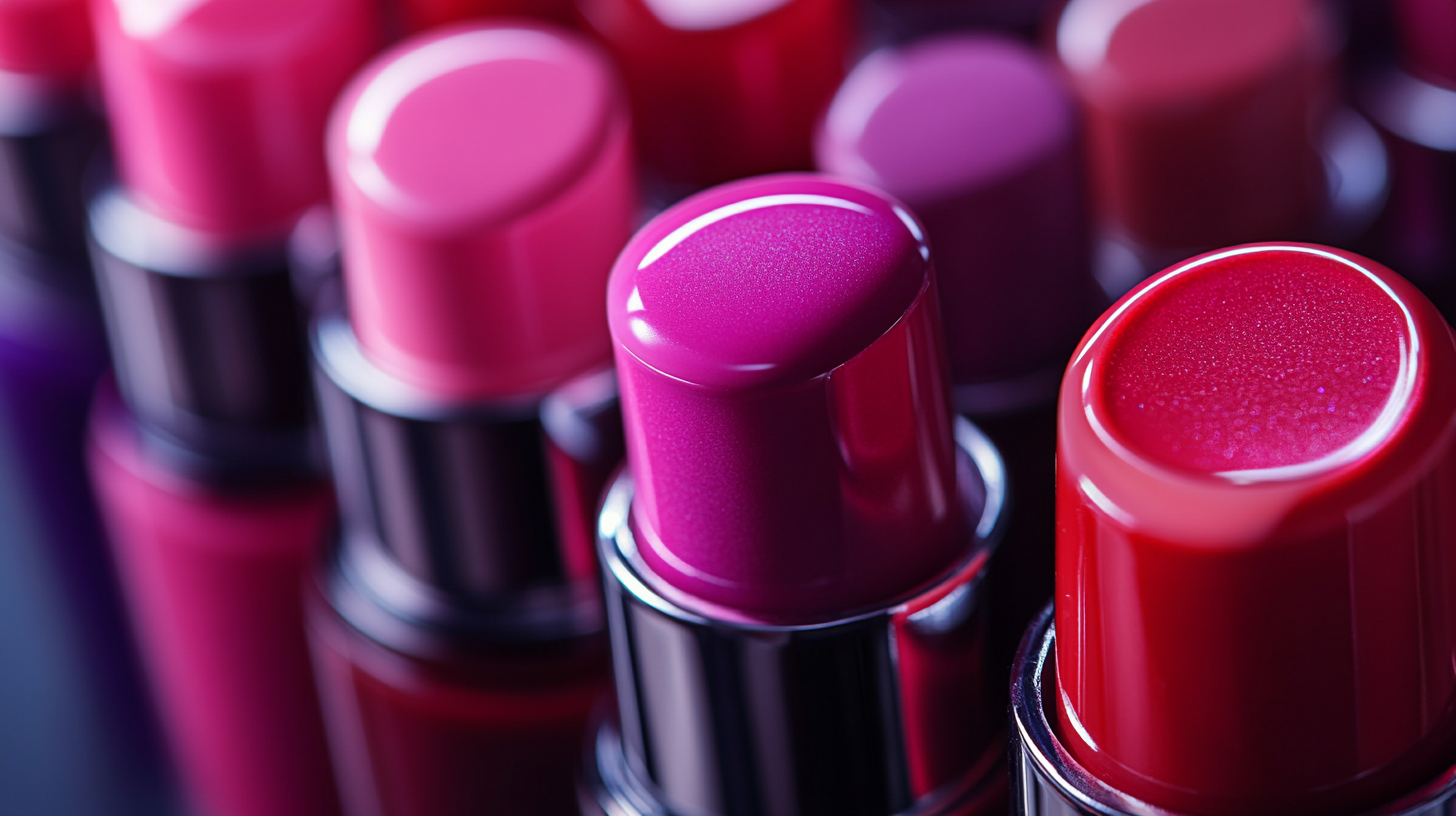Leave Your Message
-
Phone
-
E-mail
-
Whatsapp


In the vibrant world of cosmetics, nail polish stands out as a staple product, commanding a significant share of the global beauty market. According to a recent report by Grand View Research, the global nail polish market size was valued at over $15 billion in 2020 and is expected to expand at a compound annual growth rate (CAGR) of 6.2% from 2021 to 2028. As consumer preferences evolve towards organic and cruelty-free formulations, businesses must navigate a myriad of factors when sourcing nail polish to meet market demand and maintain a competitive edge. By understanding the importance of ingredient quality, formulation trends, packaging, and sustainability practices, companies can effectively cater to their customer base while aligning with industry standards. This blog will explore essential factors that should be considered when sourcing nail polish for your business, ensuring you are well-equipped to thrive in this dynamic sector.

The nail polish industry in Australia is witnessing significant growth, as evidenced by the projected market demand expected to reach US$ 256 million by 2030, with an impressive annual growth rate of 8.3%. This trend indicates a thriving demand from consumers who are increasingly seeking diverse nail art options and high-quality products. As sourcing professionals, it is essential to stay informed about emerging market trends that will influence purchasing decisions in this sector, ensuring that the products align with customer preferences and industry standards.
In exploring the marketing dynamics, understanding the 7Ps—Product, Price, Place, Promotion, People, Physical Evidence, and Process—becomes crucial for effective strategic sourcing. Businesses need to assess what types of nail polish are trending, from vegan formulations to long-lasting finishes, and adapt their offerings accordingly. Additionally, pricing strategies must reflect both premium quality and consumer affordability to capture a broader audience. Establishing strong supply chain partnerships and ensuring promotional efforts highlight product uniqueness are paramount in helping businesses capitalize on the growing interest in nail salon services. By prioritizing these essential factors, businesses can effectively navigate the competitive landscape of the nail polish market and meet consumer demands.

When sourcing nail polish for your business, understanding ingredient safety and compliance with regulations is crucial. The recent regulatory landscape highlights the importance of evaluating chemicals such as PFAS (per- and polyfluoroalkyl substances) and methylene chloride. While there is significant pressure to ban PFAS globally due to potential health risks, experts suggest that such blanket bans may lack a solid scientific foundation. It is essential for companies to stay informed about these discussions and consider the implications of ingredient use on both safety and policy.
Additionally, the safety of widely used ingredients is under scrutiny, as seen with titanium dioxide. The European Food Safety Authority has deemed titanium dioxide, previously a safe food additive, no longer acceptable for consumption. This shift emphasizes the need for transparency in ingredient sourcing, particularly in cosmetic products. Brands must not only comply with existing regulations but also proactively communicate the safety of their ingredients to consumers, especially given the heightened concerns surrounding certain chemicals found in personal care products. As businesses navigate these evolving regulations, prioritizing safety can enhance consumer trust and uphold brand integrity.
| Factor | Description | Regulatory Standards | Ingredient Safety |
|---|---|---|---|
| Formulation | Consider the base, colorants, and the overall formula. | Comply with FDA regulations and EU Cosmetic Regulation. | Evaluate for harmful chemicals like toluene and formaldehyde. |
| Source Integrity | Ensure suppliers have integrity and quality control systems. | Check certifications of suppliers. | Look for transparency in sourcing and ingredient listings. |
| Environmental Impact | Consider eco-friendly formulations and practices. | Review regulations relating to environmental compliance. | Assess the biodegradability and toxicity of ingredients. |
| Consumer Trends | Stay informed about popular color and formula trends. | Align with the latest safety and labeling standards. | Avoid ingredients that are flagged by consumer watchdogs. |
When sourcing nail polish for your business, understanding consumer preferences and changing trends in shades is essential. The nail polish market, currently valued at approximately $9.5 billion in 2023, is projected to grow at a compound annual growth rate (CAGR) of around 6.2% from 2024 to 2032. This growth can be attributed to an increasing emphasis on personal beauty and self-care among consumers, leading to heightened demand for innovative and high-quality nail products.
The nail polish sector is diverse, encompassing products such as nail polish, base and top coats, remover, and cuticle care. Each product type caters to specific consumer needs and preferences, which are constantly evolving. For instance, recent trends indicate a rising popularity of eco-friendly and cruelty-free options, as well as a shift towards bold and unconventional shades. Additionally, the distribution channels play a crucial role in reaching target demographics, with online sales gaining momentum in the wake of changing shopping habits, particularly in the Asia-Pacific region where beauty trends are rapidly evolving. Keeping abreast of these shifts will enable businesses to position themselves effectively in this dynamic market.

When sourcing nail polish for your business, assessing supplier reliability and quality control is paramount. The beauty and personal care industry has witnessed significant growth and resilience, making it a lucrative field for private equity investment. This highlights the importance of choosing suppliers that not only meet your product standards but also align with the latest industry trends. With a multitude of options available, it is crucial to conduct thorough research on potential suppliers to ensure they can provide high-quality products consistently.
Quality control processes have evolved significantly, with innovative solutions such as augmented reality software being implemented to enhance inspection accuracy. Such technologies can reduce errors in production by up to 90%, ensuring that the nail polish you offer is of exemplary quality. This not only safeguards your brand reputation but also satisfies your customers’ expectations. By prioritizing reliable suppliers who adopt advanced quality control practices, your business will be well-positioned to thrive in a competitive market, driven by new trends and consumer demands.
When sourcing nail polish for your business, it is crucial to analyze cost factors and supply chain logistics to ensure a competitive edge in an evolving market. The nitrocellulose production cost analysis reveals substantial financial considerations that impact the pricing of nail polish. As the production of nitrocellulose, a key ingredient, requires significant investment in manufacturing processes and machinery, understanding these costs can help businesses negotiate better pricing with suppliers and optimize their procurement strategies.
Additionally, the global nail care products market is set to experience robust growth, projected to increase from $25.76 billion in 2025 to $36.27 billion by 2032. This anticipated growth underscores the importance of establishing reliable supply chains. Factors such as sourcing high-quality raw materials and ensuring efficient distribution channels play a critical role in maintaining product integrity and availability. For instance, the Australian nail salon market is expected to reach $256 million by 2030, indicating escalating demand that businesses must prepare for by effectively managing their supply chain logistics to meet consumer expectations and capitalize on market opportunities.
